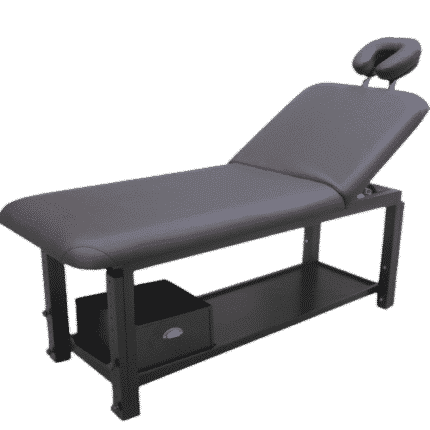Covid-19 Lockdown News & Guidelines
The latest Government Guidelines on Lockdown restrictions and lifting of restrictions for England can be found here: https://www.gov.uk/coronavirus
The latest Government Guidelines on Lockdown restrictions and lifting of restrictions for Scotland can be found here: https://www.gov.scot/coronavirus-covid-19/https://www.gov.uk/coronavirus
The latest Government Guidelines on Lockdown restrictions and lifting of restrictions for Wales can be found here: https://gov.wales/coronavirus
The latest Government Guidelines on Lockdown restrictions and lifting of restrictions for Northern Ireland can be found here: https://www.nidirect.gov.uk/articles/coronavirus-covid-19-regulations-guidance-what-restrictions-mean-you
The Covid-19 alert levels can be found here: https://www.gov.uk/government/publications/uk-covid-19-alert-level-methodology-an-overview/uk-covid-19-alert-level-methodology-an-overview
Updated 5th Match 2021 the current alert levels are described as:
One of the key objectives of the Joint Biosecurity Centre (JBC) is to provide advice to the UK chief medical officers (CMOs) who in turn advise ministers on the UK COVID-19 alert level. The alert levels were defined in the UK government’s COVID-19 recovery strategy ‘Our Plan to Rebuild’ in May 2020 and communicate the current risk at a UK-wide level.
The alert levels are:
- level 1: COVID-19 is not known to be present in the UK
- level 2: COVID-19 is present in UK, but the number of cases and transmission is low
- level 3: a COVID-19 epidemic is in general circulation
- level 4: a COVID-19 epidemic is in general circulation; transmission is high or rising exponentially
- level 5: as level 4 and there is a material risk of healthcare services being overwhelmed
Please refer to https://www.gov.uk/coronavirus for latest information
Full details for the Roadmap out of Lockdown (set by the UK government can be found here: https://www.gov.uk/government/publications/covid-19-response-spring-2021
The Executive Summary from the roadmap defined by the UK government is below. For the full report, please follow the above link to the .gov website.
Executive summary (see link above for full report)
The UK Government’s overriding goal is to protect the lives and livelihoods of citizens across Scotland, Wales, Northern Ireland and England. For the benefit of the whole UK, the Government has secured access to more than 400 million vaccine doses,[1] established the largest testing infrastructure in Europe, and provided an unprecedented level of financial support for businesses and individuals.
This COVID-19 Response sets out how the Government will continue to protect and support citizens across the UK and provides a roadmap out of the current lockdown in England. The Devolved Administrations are setting out how lockdown will be eased in Scotland, Wales and Northern Ireland.
Vaccines are at the heart of the UK Government’s strategy to manage COVID-19. The UK is deploying the most ambitious vaccination programme in history. So far, over 17 million people have received a vaccine across the UK.
The Government has achieved its goal to offer a first dose of the vaccine by 15 February to all those in the four most vulnerable cohorts identified by the Joint Committee on Vaccination and Immunisation (JCVI). This includes elderly care home residents, those aged 70 and over, those with conditions that would leave them clinically extremely vulnerable to serious illness and death as a consequence of COVID-19, and frontline health and social care staff. The NHS has now started to vaccinate the next set of cohorts (JCVI cohorts 5 to 9), including adults aged 50 and over and people whose underlying health conditions make them more likely to suffer serious disease. The Government aims for everyone who is 50 and over, or at risk, to have been offered a first dose of the vaccine by 15 April, and for everyone aged 18 and over to have been offered a first dose by 31 July.
The success of the vaccination rollout, alongside falling infections and hospitalisations, is paving the way for the safe and gradual lifting of restrictions. Vaccines will mean that fewer people will get COVID-19 and that those who do are far less likely to go to hospital or to die. However, not all those offered the vaccine will take it up and there are some groups, such as children, for whom the vaccine is not yet authorised. Even when vaccinated, there is still a chance people can contract the virus and pass it on. No vaccine is 100% effective and, like all viruses, COVID-19 can mutate. As a result, as lockdown is lifted, there will sadly be more cases, hospitalisations and deaths. The Government will take a cautious approach to easing lockdown, guided by the data in order to avoid a surge in infections that would put unsustainable pressure on the NHS.
Increased vaccination reduces the risk of infection leading to severe disease or death. However, as with other diseases like the flu, some degree of risk will always remain. As social and economic restrictions are lifted, it will be increasingly important for people to consider the risks for themselves, taking into account whether they and those they meet have been vaccinated or have any pre-existing vulnerabilities.
The Government has taken the best scientific advice from the Scientific Advisory Group for Emergencies (SAGE) and its working groups on the pace and sequencing of reopening. This analysis is being published by SAGE to inform the public of the scientific and evidential basis that has helped to shape the roadmap.
Due to the relatively uniform spread of the virus across the country, the Government plans to ease restrictions at the same time across the whole of England. The roadmap seeks to balance health, including mental health, economic and social factors and how they disproportionately impact certain groups, as well as epidemiological evidence.
The roadmap set out in chapter 3 outlines four steps for easing restrictions. Before proceeding to the next step, the Government will examine the data to assess the impact of the previous step. This assessment will be based on four tests:
a. The vaccine deployment programme continues successfully.
b. Evidence shows vaccines are sufficiently effective in reducing hospitalisations and deaths in those vaccinated.
c. Infection rates do not risk a surge in hospitalisations which would put unsustainable pressure on the NHS.
d. Our assessment of the risks is not fundamentally changed by new Variants of Concern.
It takes around four weeks for the data to reflect the impact of the previous step and the Government will provide a further week’s notice to individuals and businesses before making changes. The roadmap therefore sets out indicative, “no earlier than” dates for the steps which are five weeks apart. These dates are wholly contingent on the data and are subject to change if the four tests are not met.
As restrictions are lifted, maintaining good habits which minimise transmission will be important, for both individuals and for businesses. The Test, Trace and Isolate system will continue to support the easing of social and economic restrictions. It will also be important in identifying local outbreaks and Variants of Concern. Strong measures are in place at the border to mitigate the risk of importing new cases and new variants. Where a dangerous Variant of Concern is identified and is likely to pose a real risk to the vaccination programme or public health, the Government will take a highly precautionary approach, acting fast to address outbreaks. The Government will also act quickly where an area sees unmanageable virus growth or the NHS is at risk, with local intervention centred on testing, communications and enforcement.
As restrictions ease and the economy is gradually and safely reopened, the Government will carefully tailor the level of support to individuals and businesses to reflect the changing circumstances. The 3 March Budget will set out further detail on economic support to protect jobs and livelihoods across the UK. The Government will continue to provide support for the most vulnerable. Recognising that visits from family and friends are crucial for the wellbeing of care home residents of all ages, their families and friends, the roadmap includes more opportunities for visiting. Additional testing will also be provided to facilitate safer visits for residents in high risk Supported Living and Extra Care settings. The Government recognises that some groups within society have felt the impact of the pandemic more acutely, and is committed to addressing the longer-term implications of COVID-19 for those communities.
Over time, scientists expect COVID-19 to become endemic, meaning the virus will reach a stable, and hopefully manageable level. Vaccinations – including revaccination – will be key to managing the transition from pandemic to endemic state. Therapeutics and antivirals will become increasingly important, replacing most non-pharmaceutical interventions over the long-term. The Government is also committed to building resilience for any future pandemics, both domestically and on the international stage.
1. Introduction
New variant cases, hospitalisations and deaths
At the end of 2020, a new and more transmissible variant of COVID-19 (B.1.1.7) began to spread very quickly across the UK. The Government responded by reintroducing the Stay at Home order first in the regions most affected and then nationally across England. The Devolved Administrations took similar approaches.
The B.1.1.7 variant appears to have increased transmissibility compared to the original strain of COVID-19 and has grown quickly to become the dominant variant across the UK. Both strains can be spread by people with no symptoms. As a consequence, the B.1.1.7 variant led to further surges in cases, hospitalisations and deaths.
Please refer to following link for the rest of the report: https://www.gov.uk/government/publications/covid-19-response-spring-2021/covid-19-response-spring-2021
Date: 17th March 2021
Title: Vaccine side effects: My experience of them and what they mean
Pub: https://www.bbc.co.uk/news/health-56375307
Article:
I was over the moon to get vaccinated. I’ve covered the coronavirus pandemic, including the race to develop a vaccine, since only a handful of people were infected in Wuhan.
So when it was my turn to roll up my sleeve at the GP surgery, it really felt like a moment.
But I’m going to be open and honest with you: the vaccine floored me.
Let’s be clear, even with hindsight I’d do it all again. I’d rather have side effects than Covid, or another year of restrictions, or a higher chance of accidentally passing the virus onto a loved one.
I had my first dose of the Oxford-AstraZeneca vaccine at 0930 in the morning. That evening I spiralled rapidly downhill and could barely scrape myself out of bed for the next three days.
The worst was the migraine and vomiting, but I also had aches, chills and exhaustion.
It’s fair to say I was moaning “Why me?” from my sick bed. But as I recovered, I wondered why do some of us get worse side effects than others, and do they mean I’ve built a super-strong immune response? So I spent an episode of Inside Health on BBC Radio 4 finding out.
- Listen: Inside Health on BBC Radio 4 at 2100 and then on BBC Sounds.
Where do side effects come from?
Covid vaccines “trick” the body into thinking it is fighting coronavirus and tap into our natural immune response to an infection.
First there is a reaction in the arm where you are injected – think swelling and soreness – as the immune system swings into gear.
This can progress to affect the rest of the body and cause flu-like symptoms including fever, chills and nausea.
“That’s caused by the inflammatory response,” Eleanor Riley, a professor of immunology and infectious disease at Edinburgh University, told me.
It works like a chemical fire alarm. It is a flood of chemicals released into the body warning that something is wrong.
Prof Riley said: “It mobilises the immune response and sends immune cells into the tissue around your arm to figure out what’s going on.”
However, it is these same chemicals that can make us feel temporarily unwell.
Why do some people get more side effects?
However, side effects vary massively from one person to another. Some will not notice a thing; others will feel groggy, but good enough to go to work; others will need to ride it out in bed.
“A really important component, and this might be relevant for you James [I am in my mid-30s], is age,” Prof Andrew Pollard, who led trials of the Oxford-AstraZeneca vaccine, told me.
“The older you are, the less the side effects – the over-70s have almost no side effects.”
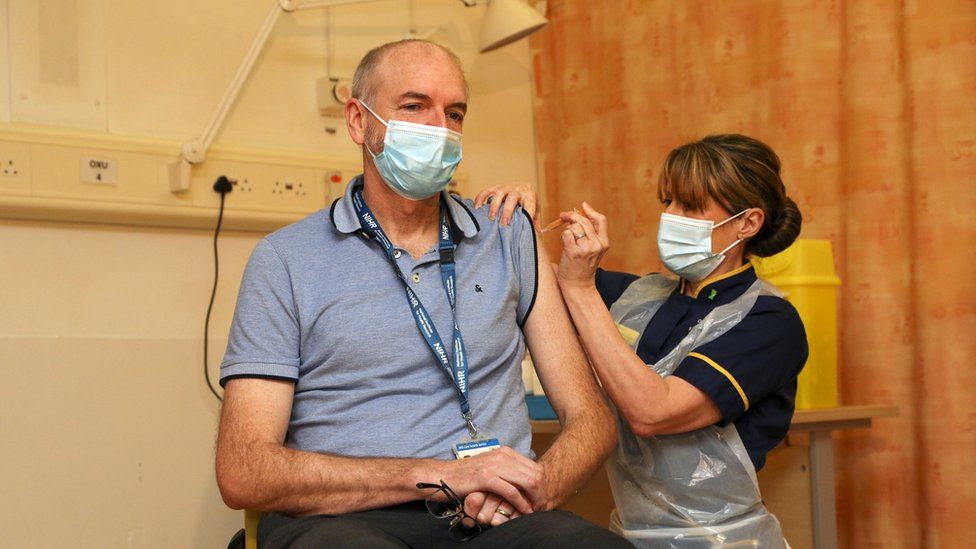 IMAGE COPYRIGHT: GETTY IMAGES
IMAGE COPYRIGHT: GETTY IMAGESBut even two people the same age can have wildly different reactions to a vaccine.
“There is enormous genetic diversity in our immune systems, that’s what underlies the difference,” Prof Riley told Inside Health.
This diversity means some people’s immune systems run a little bit hotter and are more prone to reacting aggressively.
Prof Riley said: “The people who, like yourself, go into full blown flu-like symptoms have rather overreacted to the whole thing.
“And it may be you’re one of those people that always feels terribly ill if you have a cold or flu. I don’t want to accuse you of having man-flu, but you may be one of those people.”
Another factor that slightly increases the chance of side effects is having had a previous coronavirus infection, which can lead to an incredibly strong immune response after vaccination.
Do side effects mean I have more protection?
Selfishly, I had hoped that having side effects meant I had an incredibly strong immune response and there has been some evidence from previous vaccines that this would be the case.
“There are examples, like pandemic flu in 2009, where stronger side effects meant a strong immune response,” said Prof Pollard.
But that is not the case with the Covid vaccine, everyone is getting roughly the same protection.
“It’s fascinating, even though the elderly had few side effects, they had exactly the same immune response.”
The explanation comes from how the two halves of the immune system work together.
The first is called the innate response and includes that chemical fire alarm. The other half is the adaptive response which learns and then remembers how to fight an infection by designing B-cells that produce antibodies to seek out and destroy the virus, as well as T-cells which can attack any of the body’s cells which have been infected.
Prof Riley said: “It’s this early innate phase of the immune response that varies with age and varies amongst people and that’s what determines the strength of your side effects.
“You only need a little bit of that innate response to wake up the adaptive response and get that full panoply of B-cells and T-cells that will protect you.”
Will my second dose be bad too?
A natural worry after one bout of side effects is there could be another one on the horizon. However, I have assurances.
“Your second dose will be innocuous, the second dose is very mild in comparison to the first,” said Prof Pollard, who ran the Oxford vaccines trials.
However, he did warn that some data suggested the second Pfizer dose might lead to slightly more side effects than the first.
Should we even be talking about side effects?
Concerns over vaccine side effects had dominated the news after a very small number of people had blood clots after they were vaccinated.
I warned before the rollout started of the dangers of falsely assuming health problems that happen by coincidence are caused by the vaccine. The European Medicines Agency has said there is “no indication that vaccination has caused these conditions”.
But there are genuine side effects too, and Prof Pollard says it is important to be open and honest about what they are.
He said: “In trials you have the opportunity to say you might be like James Gallagher and feel rotten for a few days, then you know what to expect and it’s an inconvenience. You take some paracetamol and it ends.
“If it just hits you and you don’t expect it, then it can be pretty worrying.”
The latest Government Guidelines on Lockdown restrictions and lifting of restrictions for England can be found here: https://www.gov.uk/coronavirus
The latest Government Guidelines on Lockdown restrictions and lifting of restrictions for Scotland can be found here: https://www.gov.scot/coronavirus-covid-19/https://www.gov.uk/coronavirus
The latest Government Guidelines on Lockdown restrictions and lifting of restrictions for Wales can be found here: https://gov.wales/coronavirus
The latest Government Guidelines on Lockdown restrictions and lifting of restrictions for Northern Ireland can be found here: https://www.nidirect.gov.uk/articles/coronavirus-covid-19-regulations-guidance-what-restrictions-mean-you
The Covid-19 alert levels can be found here: https://www.gov.uk/government/publications/uk-covid-19-alert-level-methodology-an-overview/uk-covid-19-alert-level-methodology-an-overview
Updated 5th Match 2021 the current alert levels are described as:
One of the key objectives of the Joint Biosecurity Centre (JBC) is to provide advice to the UK chief medical officers (CMOs) who in turn advise ministers on the UK COVID-19 alert level. The alert levels were defined in the UK government’s COVID-19 recovery strategy ‘Our Plan to Rebuild’ in May 2020 and communicate the current risk at a UK-wide level.
The alert levels are:
- level 1: COVID-19 is not known to be present in the UK
- level 2: COVID-19 is present in UK, but the number of cases and transmission is low
- level 3: a COVID-19 epidemic is in general circulation
- level 4: a COVID-19 epidemic is in general circulation; transmission is high or rising exponentially
- level 5: as level 4 and there is a material risk of healthcare services being overwhelmed
Please refer to https://www.gov.uk/coronavirus for latest information
Full details for the Roadmap out of Lockdown (set by the UK government can be found here: https://www.gov.uk/government/publications/covid-19-response-spring-2021
The Executive Summary from the roadmap defined by the UK government is below. For the full report, please follow the above link to the .gov website.
Executive summary (see link above for full report)
The UK Government’s overriding goal is to protect the lives and livelihoods of citizens across Scotland, Wales, Northern Ireland and England. For the benefit of the whole UK, the Government has secured access to more than 400 million vaccine doses,[1] established the largest testing infrastructure in Europe, and provided an unprecedented level of financial support for businesses and individuals.
This COVID-19 Response sets out how the Government will continue to protect and support citizens across the UK and provides a roadmap out of the current lockdown in England. The Devolved Administrations are setting out how lockdown will be eased in Scotland, Wales and Northern Ireland.
Vaccines are at the heart of the UK Government’s strategy to manage COVID-19. The UK is deploying the most ambitious vaccination programme in history. So far, over 17 million people have received a vaccine across the UK.
The Government has achieved its goal to offer a first dose of the vaccine by 15 February to all those in the four most vulnerable cohorts identified by the Joint Committee on Vaccination and Immunisation (JCVI). This includes elderly care home residents, those aged 70 and over, those with conditions that would leave them clinically extremely vulnerable to serious illness and death as a consequence of COVID-19, and frontline health and social care staff. The NHS has now started to vaccinate the next set of cohorts (JCVI cohorts 5 to 9), including adults aged 50 and over and people whose underlying health conditions make them more likely to suffer serious disease. The Government aims for everyone who is 50 and over, or at risk, to have been offered a first dose of the vaccine by 15 April, and for everyone aged 18 and over to have been offered a first dose by 31 July.
The success of the vaccination rollout, alongside falling infections and hospitalisations, is paving the way for the safe and gradual lifting of restrictions. Vaccines will mean that fewer people will get COVID-19 and that those who do are far less likely to go to hospital or to die. However, not all those offered the vaccine will take it up and there are some groups, such as children, for whom the vaccine is not yet authorised. Even when vaccinated, there is still a chance people can contract the virus and pass it on. No vaccine is 100% effective and, like all viruses, COVID-19 can mutate. As a result, as lockdown is lifted, there will sadly be more cases, hospitalisations and deaths. The Government will take a cautious approach to easing lockdown, guided by the data in order to avoid a surge in infections that would put unsustainable pressure on the NHS.
Increased vaccination reduces the risk of infection leading to severe disease or death. However, as with other diseases like the flu, some degree of risk will always remain. As social and economic restrictions are lifted, it will be increasingly important for people to consider the risks for themselves, taking into account whether they and those they meet have been vaccinated or have any pre-existing vulnerabilities.
The Government has taken the best scientific advice from the Scientific Advisory Group for Emergencies (SAGE) and its working groups on the pace and sequencing of reopening. This analysis is being published by SAGE to inform the public of the scientific and evidential basis that has helped to shape the roadmap.
Due to the relatively uniform spread of the virus across the country, the Government plans to ease restrictions at the same time across the whole of England. The roadmap seeks to balance health, including mental health, economic and social factors and how they disproportionately impact certain groups, as well as epidemiological evidence.
The roadmap set out in chapter 3 outlines four steps for easing restrictions. Before proceeding to the next step, the Government will examine the data to assess the impact of the previous step. This assessment will be based on four tests:
a. The vaccine deployment programme continues successfully.
b. Evidence shows vaccines are sufficiently effective in reducing hospitalisations and deaths in those vaccinated.
c. Infection rates do not risk a surge in hospitalisations which would put unsustainable pressure on the NHS.
d. Our assessment of the risks is not fundamentally changed by new Variants of Concern.
It takes around four weeks for the data to reflect the impact of the previous step and the Government will provide a further week’s notice to individuals and businesses before making changes. The roadmap therefore sets out indicative, “no earlier than” dates for the steps which are five weeks apart. These dates are wholly contingent on the data and are subject to change if the four tests are not met.
As restrictions are lifted, maintaining good habits which minimise transmission will be important, for both individuals and for businesses. The Test, Trace and Isolate system will continue to support the easing of social and economic restrictions. It will also be important in identifying local outbreaks and Variants of Concern. Strong measures are in place at the border to mitigate the risk of importing new cases and new variants. Where a dangerous Variant of Concern is identified and is likely to pose a real risk to the vaccination programme or public health, the Government will take a highly precautionary approach, acting fast to address outbreaks. The Government will also act quickly where an area sees unmanageable virus growth or the NHS is at risk, with local intervention centred on testing, communications and enforcement.
As restrictions ease and the economy is gradually and safely reopened, the Government will carefully tailor the level of support to individuals and businesses to reflect the changing circumstances. The 3 March Budget will set out further detail on economic support to protect jobs and livelihoods across the UK. The Government will continue to provide support for the most vulnerable. Recognising that visits from family and friends are crucial for the wellbeing of care home residents of all ages, their families and friends, the roadmap includes more opportunities for visiting. Additional testing will also be provided to facilitate safer visits for residents in high risk Supported Living and Extra Care settings. The Government recognises that some groups within society have felt the impact of the pandemic more acutely, and is committed to addressing the longer-term implications of COVID-19 for those communities.
Over time, scientists expect COVID-19 to become endemic, meaning the virus will reach a stable, and hopefully manageable level. Vaccinations – including revaccination – will be key to managing the transition from pandemic to endemic state. Therapeutics and antivirals will become increasingly important, replacing most non-pharmaceutical interventions over the long-term. The Government is also committed to building resilience for any future pandemics, both domestically and on the international stage.
1. Introduction
New variant cases, hospitalisations and deaths
At the end of 2020, a new and more transmissible variant of COVID-19 (B.1.1.7) began to spread very quickly across the UK. The Government responded by reintroducing the Stay at Home order first in the regions most affected and then nationally across England. The Devolved Administrations took similar approaches.
The B.1.1.7 variant appears to have increased transmissibility compared to the original strain of COVID-19 and has grown quickly to become the dominant variant across the UK. Both strains can be spread by people with no symptoms. As a consequence, the B.1.1.7 variant led to further surges in cases, hospitalisations and deaths.
Please refer to following link for the rest of the report: https://www.gov.uk/government/publications/covid-19-response-spring-2021/covid-19-response-spring-2021
Date: 17th March 2021
Title: Vaccine side effects: My experience of them and what they mean
Pub: https://www.bbc.co.uk/news/health-56375307
Article:
I was over the moon to get vaccinated. I’ve covered the coronavirus pandemic, including the race to develop a vaccine, since only a handful of people were infected in Wuhan.
So when it was my turn to roll up my sleeve at the GP surgery, it really felt like a moment.
But I’m going to be open and honest with you: the vaccine floored me.
Let’s be clear, even with hindsight I’d do it all again. I’d rather have side effects than Covid, or another year of restrictions, or a higher chance of accidentally passing the virus onto a loved one.
I had my first dose of the Oxford-AstraZeneca vaccine at 0930 in the morning. That evening I spiralled rapidly downhill and could barely scrape myself out of bed for the next three days.
The worst was the migraine and vomiting, but I also had aches, chills and exhaustion.
It’s fair to say I was moaning “Why me?” from my sick bed. But as I recovered, I wondered why do some of us get worse side effects than others, and do they mean I’ve built a super-strong immune response? So I spent an episode of Inside Health on BBC Radio 4 finding out.
- Listen: Inside Health on BBC Radio 4 at 2100 and then on BBC Sounds.
Where do side effects come from?
Covid vaccines “trick” the body into thinking it is fighting coronavirus and tap into our natural immune response to an infection.
First there is a reaction in the arm where you are injected – think swelling and soreness – as the immune system swings into gear.
This can progress to affect the rest of the body and cause flu-like symptoms including fever, chills and nausea.
“That’s caused by the inflammatory response,” Eleanor Riley, a professor of immunology and infectious disease at Edinburgh University, told me.
It works like a chemical fire alarm. It is a flood of chemicals released into the body warning that something is wrong.
Prof Riley said: “It mobilises the immune response and sends immune cells into the tissue around your arm to figure out what’s going on.”
However, it is these same chemicals that can make us feel temporarily unwell.
Why do some people get more side effects?
However, side effects vary massively from one person to another. Some will not notice a thing; others will feel groggy, but good enough to go to work; others will need to ride it out in bed.
“A really important component, and this might be relevant for you James [I am in my mid-30s], is age,” Prof Andrew Pollard, who led trials of the Oxford-AstraZeneca vaccine, told me.
“The older you are, the less the side effects – the over-70s have almost no side effects.”
 IMAGE COPYRIGHT: GETTY IMAGES
IMAGE COPYRIGHT: GETTY IMAGESBut even two people the same age can have wildly different reactions to a vaccine.
“There is enormous genetic diversity in our immune systems, that’s what underlies the difference,” Prof Riley told Inside Health.
This diversity means some people’s immune systems run a little bit hotter and are more prone to reacting aggressively.
Prof Riley said: “The people who, like yourself, go into full blown flu-like symptoms have rather overreacted to the whole thing.
“And it may be you’re one of those people that always feels terribly ill if you have a cold or flu. I don’t want to accuse you of having man-flu, but you may be one of those people.”
Another factor that slightly increases the chance of side effects is having had a previous coronavirus infection, which can lead to an incredibly strong immune response after vaccination.
Do side effects mean I have more protection?
Selfishly, I had hoped that having side effects meant I had an incredibly strong immune response and there has been some evidence from previous vaccines that this would be the case.
“There are examples, like pandemic flu in 2009, where stronger side effects meant a strong immune response,” said Prof Pollard.
But that is not the case with the Covid vaccine, everyone is getting roughly the same protection.
“It’s fascinating, even though the elderly had few side effects, they had exactly the same immune response.”
The explanation comes from how the two halves of the immune system work together.
The first is called the innate response and includes that chemical fire alarm. The other half is the adaptive response which learns and then remembers how to fight an infection by designing B-cells that produce antibodies to seek out and destroy the virus, as well as T-cells which can attack any of the body’s cells which have been infected.
Prof Riley said: “It’s this early innate phase of the immune response that varies with age and varies amongst people and that’s what determines the strength of your side effects.
“You only need a little bit of that innate response to wake up the adaptive response and get that full panoply of B-cells and T-cells that will protect you.”
Will my second dose be bad too?
A natural worry after one bout of side effects is there could be another one on the horizon. However, I have assurances.
“Your second dose will be innocuous, the second dose is very mild in comparison to the first,” said Prof Pollard, who ran the Oxford vaccines trials.
However, he did warn that some data suggested the second Pfizer dose might lead to slightly more side effects than the first.
Should we even be talking about side effects?
Concerns over vaccine side effects had dominated the news after a very small number of people had blood clots after they were vaccinated.
I warned before the rollout started of the dangers of falsely assuming health problems that happen by coincidence are caused by the vaccine. The European Medicines Agency has said there is “no indication that vaccination has caused these conditions”.
But there are genuine side effects too, and Prof Pollard says it is important to be open and honest about what they are.
He said: “In trials you have the opportunity to say you might be like James Gallagher and feel rotten for a few days, then you know what to expect and it’s an inconvenience. You take some paracetamol and it ends.
“If it just hits you and you don’t expect it, then it can be pretty worrying.”
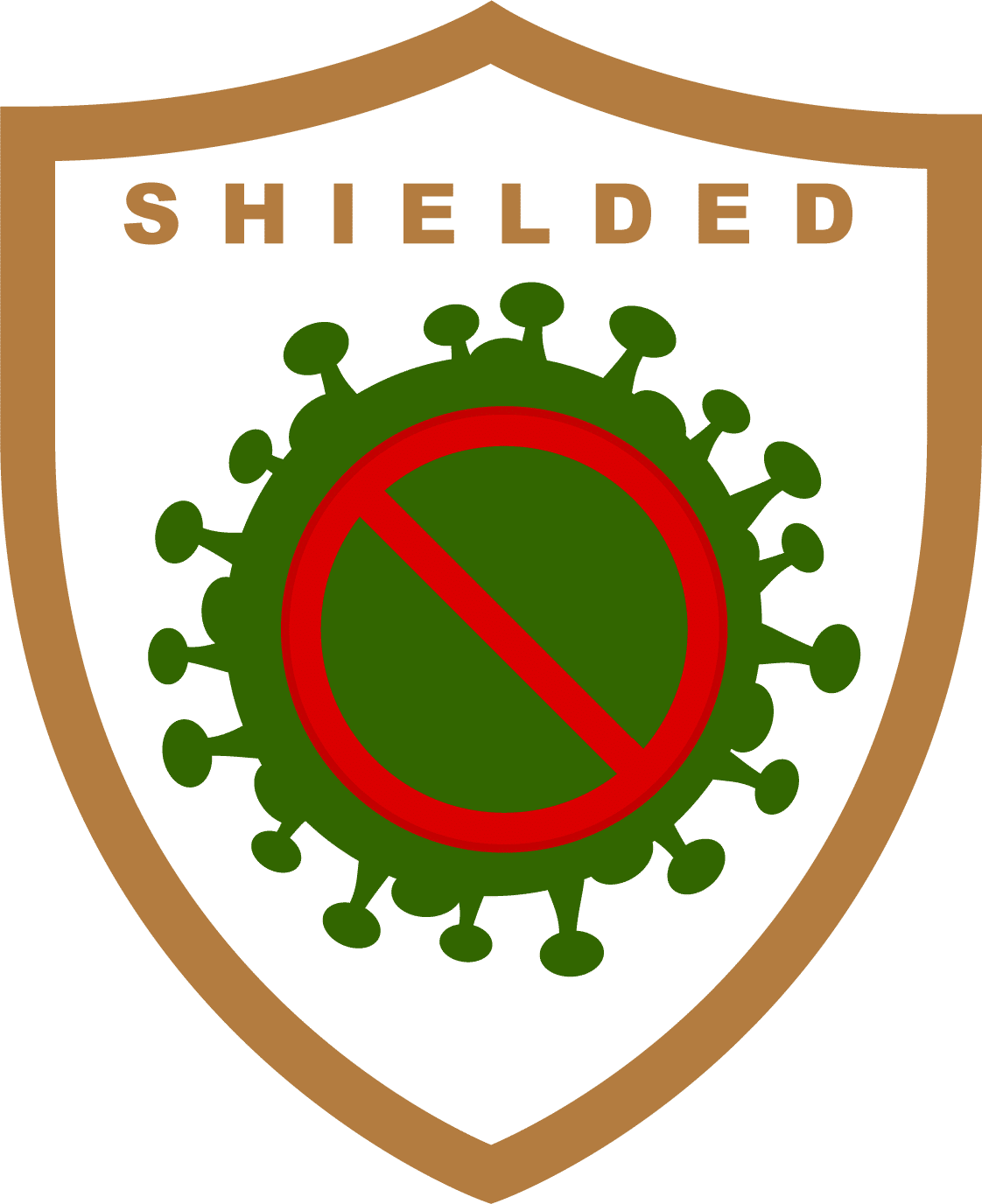
Pioneering Virus Reducing Wearables
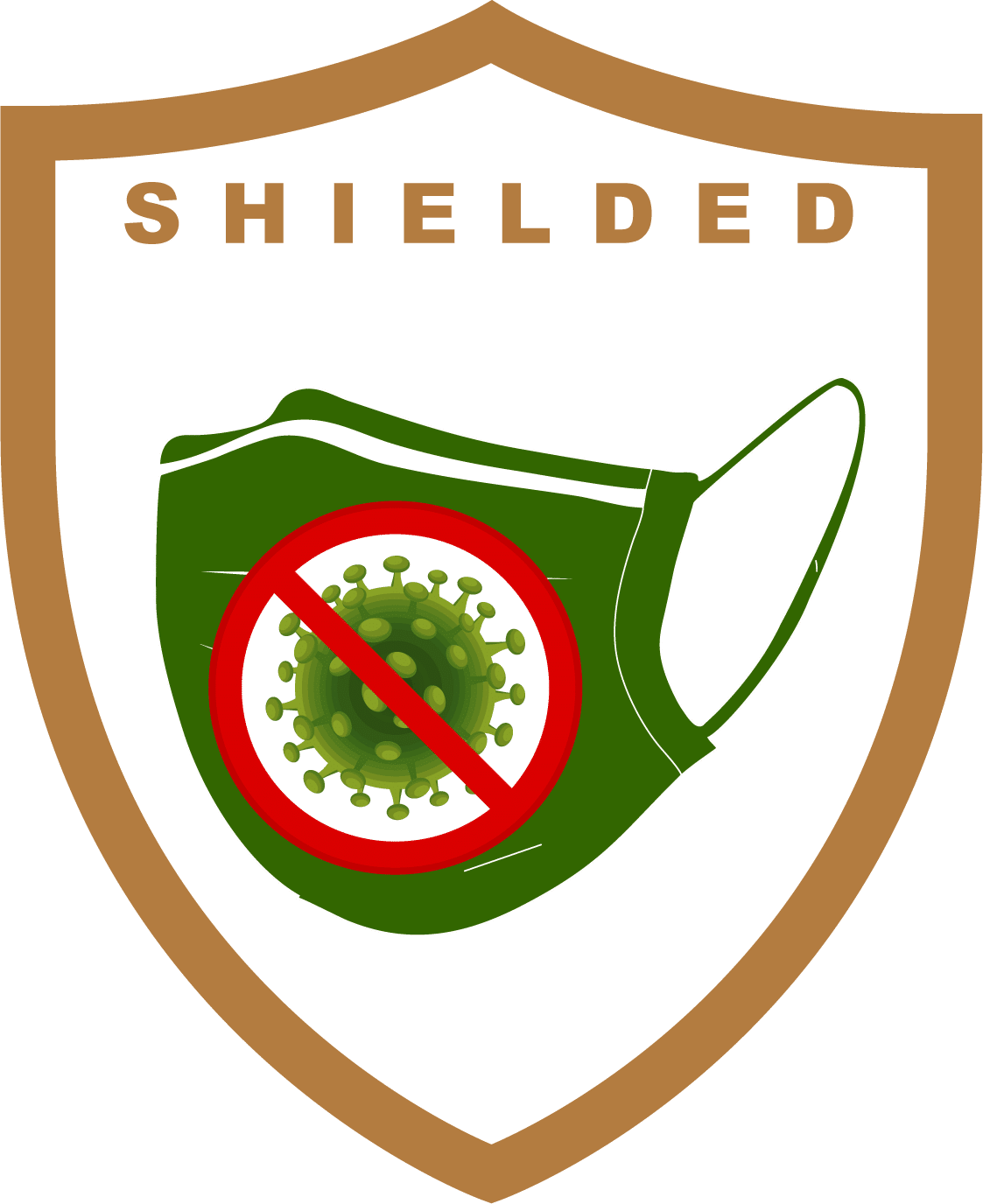
Bridging The Gap Between Medical PPE & Non-Medical Face Coverings

Up to 99.99% Virus & Bacteria Hitting The Fabric Neutralised + Destroyed

Powered Innovation For TWO WAY Protection – For YOU & Those Around You

Never Washes Out | Fast Acting | Comfortable | We Make It Easy

Continuously Self-Sanitising & Self-Protecting 24 Hours A Day, 7 Days A Week
We call it "Adaptive Non-Medical PPE™"
What Does That Mean? It means we help address 4 massive problems!
1
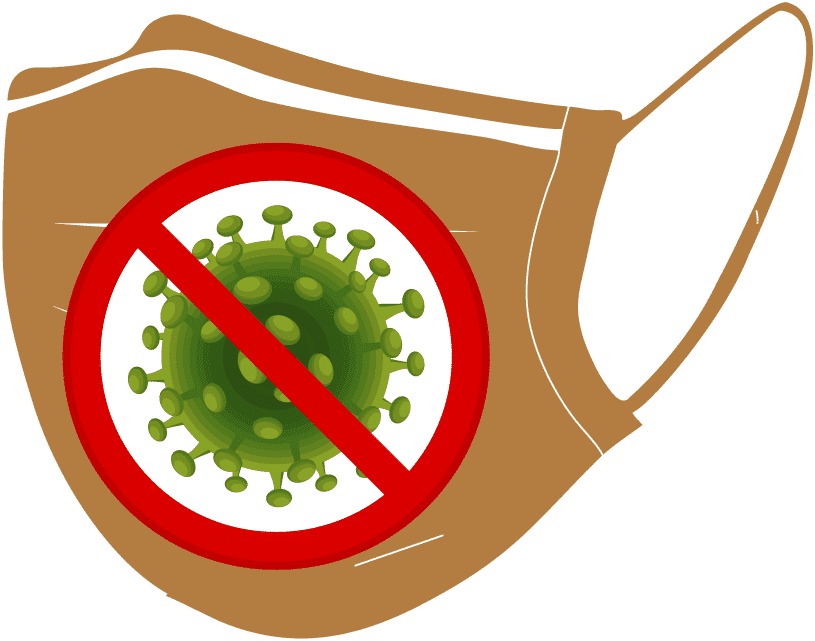
Reduced Probability Of Self Infection
Instant deactivation of pathogens scientifically proven to kill Coronavirus = less likelihood of self-infection when reusing. Easy to use & easy to fit with lives
2
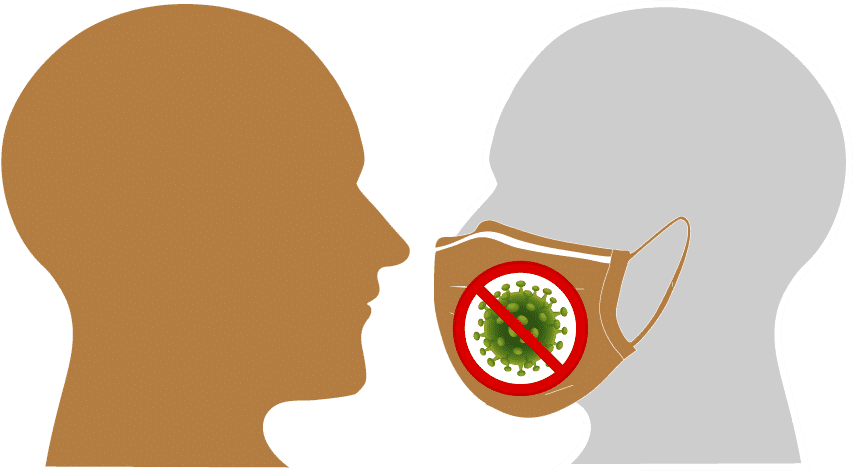
Powered Up Two Way Protection
Works hard to reduce viral load inhaled or expelled when breathing in or out through mask. This will help to reduce surface transmission
3
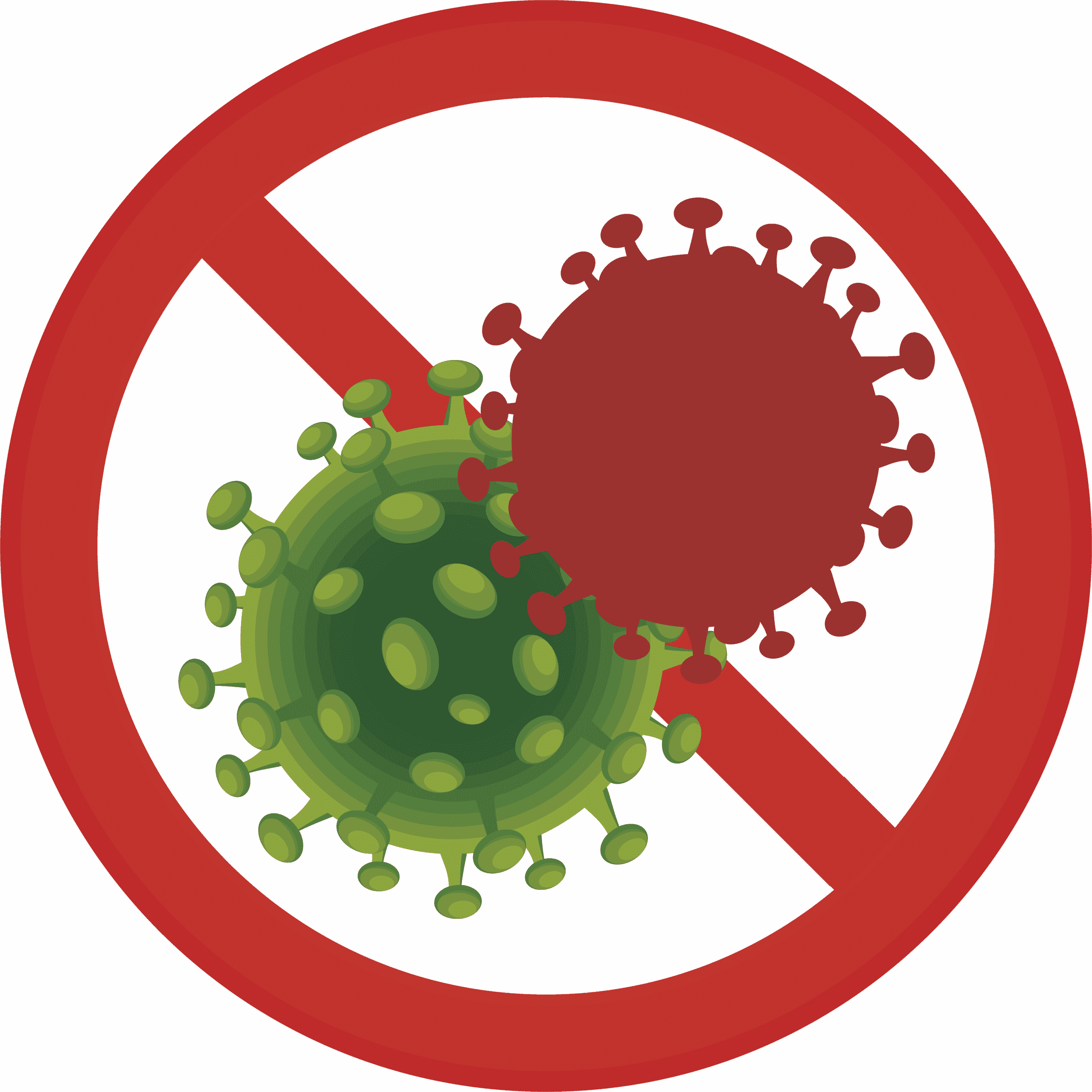
Reduced Virus Mutation
Physical destruction of the virus and instantly effective means the virus has no time to mutate. Everyone using our product will be stealth deactivating the virus through the community
4

Reduced Environmental Impact/Pollution
Reusable and washable for the life of the fabric. Wash at least 50 times & re-charge with our liquid solutions. Bonded deep into the fibres, the virus & micro-organism destroying tech never washes out.
Not just another passive face covering – ONE Akhănd Mask can make a difference.
YOU can make a difference.
Join the Akhand Army!

Pioneering Virus Reducing Wearables

At least 93% Of Virus Hitting The Fabric Destroyed

Never Washes Out | Fast Acting | Comfortable | We Make It Easy

Bridging The Gap Between Medical PPE & Non-Medical Face Coverings

Powered Innovation For TWO WAY Protection – For YOU & Those Around You

Continuously Self-sanitising 24 Hours A Day, 7 Days A Week

Pushing The Boundaries
We’ll continue to do our best to create environments which push the boundaries of technology to help limit transmission where possible…

Government Guidelines
Follow government guidelines, carefully don/doff Face Masks and Face Coverings, socially distance when required, avoid indoor spaces where possible, wash your hands as often as possible to limit spread

Premium Products: Hand Crafted
Most of our products have been re-imagined, re-engineered, designed, printed, curated and hand made in the UK. Some are built to order, please allow a few days to receive your items






